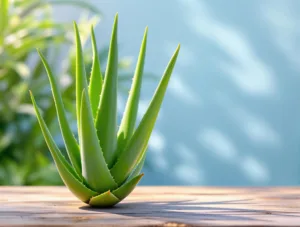Natural Remedies for Stretch Marks: A Comprehensive Guide to Prevention and Treatment
Introduction
Stretch marks, or striae, are a common skin concern affecting millions of people worldwide. These linear streaks, often appearing as reddish or purple lines before fading to a silvery-white hue, develop when the skin stretches or shrinks rapidly, causing the collagen and elastin fibers to rupture. Common causes include pregnancy, rapid weight gain or loss, puberty, and muscle growth from bodybuilding. While stretch marks are harmless, many seek ways to reduce their appearance for cosmetic reasons.
This comprehensive guide explores natural remedies for stretch marks, delving into their causes, prevention strategies, and evidence-based treatments. By understanding the science behind stretch marks and adopting a holistic skincare approach, you can improve skin elasticity, promote healing, and achieve smoother, healthier-looking skin.
Understanding Stretch Marks: Causes and Types
What Are Stretch Marks?
Stretch marks are a form of scarring that occurs when the dermis (the middle layer of the skin) stretches beyond its elasticity limits. This disrupts collagen production, leading to visible streaks. They commonly appear on the abdomen, thighs, hips, breasts, and arms.
Primary Causes of Stretch Marks
- Pregnancy (Striae Gravidarum): Hormonal changes and rapid abdominal expansion contribute to stretch marks in up to 90% of pregnant women.
- Rapid Weight Fluctuations: Sudden weight gain or loss stresses the skin, increasing the likelihood of stretch marks.
- Puberty: Growth spurts can cause stretch marks on the back, thighs, and hips in adolescents.
- Bodybuilding: Rapid muscle growth may lead to stretch marks on the shoulders and arms.
- Genetic Predisposition: A family history of stretch marks increases susceptibility.
- Corticosteroid Use: Prolonged use can weaken skin fibers, making them prone to tearing.
Types of Stretch Marks
- Striae Rubra (Red/Purple): Fresh, early-stage stretch marks with active inflammation.
- Striae Alba (White/Silver): Mature stretch marks that have faded over time.
Understanding these distinctions helps tailor treatment approaches for optimal results.
Preventing Stretch Marks: Proactive Skincare Strategies
While not all stretch marks can be prevented, these strategies can minimize their severity:
1. Maintain a Healthy Diet
A nutrient-rich diet supports skin elasticity:
- Vitamin C: Boosts collagen production (citrus fruits, bell peppers, broccoli).
- Vitamin E: Protects skin cells (almonds, spinach, avocados).
- Zinc: Aids skin repair (seeds, nuts, legumes).
- Omega-3 Fatty Acids: Keeps skin hydrated (salmon, flaxseeds, walnuts).
2. Stay Hydrated
Well-hydrated skin is more supple and resilient. Aim for at least 8 glasses of water daily.
3. Gradual Weight Management
Avoid rapid weight changes to prevent excessive skin stretching.
4. Regular Moisturizing
Hydrate the skin with natural oils and butters:
- Coconut Oil: Improves skin elasticity.
- Shea Butter: Deeply moisturizes and soothes.
- Aloe Vera: Promotes healing and reduces inflammation.
5. Gentle Exfoliation
Regular exfoliation removes dead skin cells, enhancing product absorption. Use sugar or coffee scrubs 2-3 times weekly.
Natural Remedies to Reduce Stretch Marks
For those already dealing with stretch marks, these natural treatments can help improve their appearance:
1. Aloe Vera
Aloe vera’s healing and anti-inflammatory properties promote skin repair. Apply fresh gel daily, massaging it into the skin.
2. Coconut Oil
Rich in fatty acids, coconut oil enhances skin hydration and elasticity. Warm and massage onto stretch marks twice daily.
3. Rosehip Oil
Packed with vitamins A and C, rosehip oil stimulates collagen and reduces pigmentation. Apply a few drops nightly.
4. Cocoa Butter
A deeply moisturizing agent, cocoa butter improves skin texture. Use it consistently during and after pregnancy.
5. Sugar Scrubs
A natural exfoliant, sugar scrubs boost circulation and skin renewal. Mix sugar with almond oil and lemon juice for a homemade scrub.
6. Hyaluronic Acid
This hydrating compound plumps the skin, reducing the visibility of stretch marks. Look for serums containing hyaluronic acid.
7. Vitamin E Oil
A powerful antioxidant, vitamin E oil supports skin regeneration. Break open capsules and apply directly to stretch marks.
8. Centella Asiatica (Gotu Kola)
Known for stimulating collagen, this herb is found in creams and oils targeting stretch marks.
Lifestyle Adjustments for Long-Term Skin Health
1. Exercise Regularly
Improves circulation and skin tone, aiding in stretch mark prevention.
2. Dry Brushing
Stimulates lymphatic drainage and exfoliates the skin. Use a natural bristle brush before showering.
3. Wear Sunscreen
Prevents further damage and discoloration of stretch marks.
4. Manage Stress
Chronic stress weakens collagen. Practice yoga, meditation, or deep breathing.
When to Consider Medical Treatments
If natural remedies don’t yield desired results, consult a dermatologist for:
- Laser Therapy: Stimulates collagen and elastin production.
- Microdermabrasion: Exfoliates the top skin layer.
- Chemical Peels: Promotes new skin growth.
- Prescription Retinoids: Encourages cell turnover (not safe during pregnancy).
Conclusion: Embracing Your Skin’s Journey
While stretch marks are a natural part of life for many, their appearance can be minimized through proactive skincare, nutrition, and natural treatments. Consistency is key—regular moisturizing, exfoliation, and collagen-boosting ingredients can significantly improve skin texture over time.
For those seeking faster results, professional treatments offer additional options. However, embracing your skin’s journey with self-care and patience is equally important. By adopting a holistic approach, you can enhance your skin’s health and confidence, stretch marks and all.
Would you like personalized recommendations based on your skin type? Share your experiences in the comments below!









Add comment